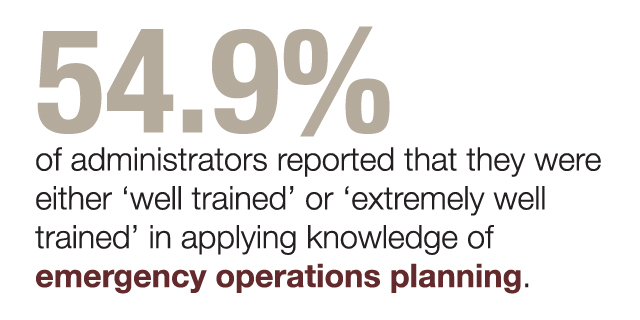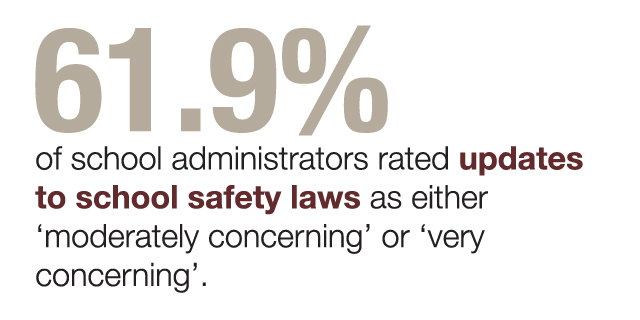TxSSC
Campus Safety and Security Needs Assessment Report
Executive Summary
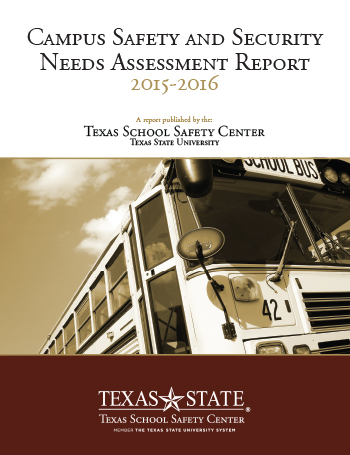
The Texas School Safety Center strives to provide accurate and relevant research-based information that supports the development of education, training, and other resources and guidance to promote school safety. To this end, TxSSC periodically conducts a needs assessment survey to examine safety concerns among school administrators, and to assess the best way to distribute relevant information. The results from this assessment are used to inform future research and guide education efforts to ensure the center continue to provide relevant information, based in the most current and effective evidence-based practices.
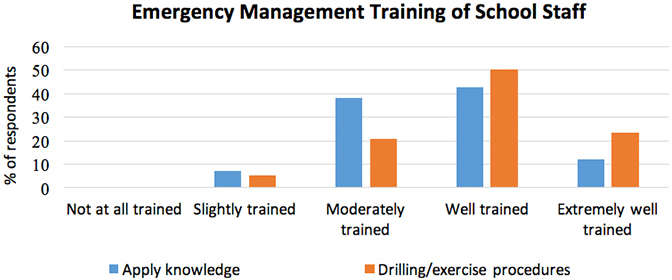
Introduction
Safety and security issues, both real and perceived, have been shown to negatively impact student success and normal human development. The nature of school safety and security issues is often changing, and it is important that research, training, and resources adapt accordingly to meet the dynamic needs of schools. While it is important to address specific topics of concern, it is also necessary for those who disseminate resources and facilitate education to know the most effective way to reach the practitioner audience.
“The results from this assessment are used to inform future research and guide education efforts”
The Texas School Safety Center serves schools across Texas by providing them with education, training, and informative resources relating to school safety. It is important to conduct regular needs assessments in order to ensure that the information provided is relevant and applicable to current school safety issues. The center therefore conducted a statewide needs assessment in the spring of 2016. The main objectives of this assessment were:
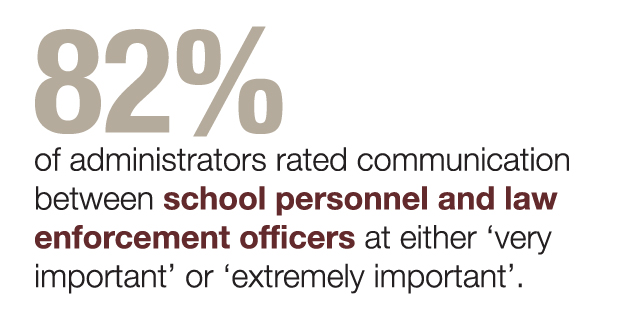
- To examine the perspectives of school administrators regarding current safety and security issues in schools and identify their most pressing concerns.
- To explore how the TxSSC can effectively disseminate relevant school safety and security information to stakeholders across the state, including school administrators, teachers and school-based law enforcement.
Methods
The objectives of this study were addressed through a questionnaire that was distributed to school administrators using Snap Survey. The questionnaire was broken up into two parts, and contained a total of 35 questions. The first part asked administrators about their needs related to school safety and security. The second asked school administrators how they would prefer to receive information and acquire training.
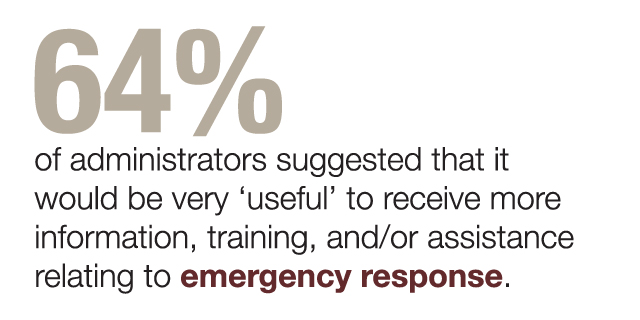
One hundred school districts were randomly selected throughout Texas, containing a total of 598 school campuses. One hundred and six school administrators completed the questionnaire; a response rate of approximately 17.7 percent.
Findings
- Twenty-six percent of respondents indicated that trends in substance use and abuse were 'very concerning.'
- Forty-nine percent of school administrators reported that law enforcement officials serve their school on at least a weekly basis. Of these, 53 percent rated understanding the various roles and expectations of SBLE officers as 'very important,' and 24 percent as 'extremely important.'
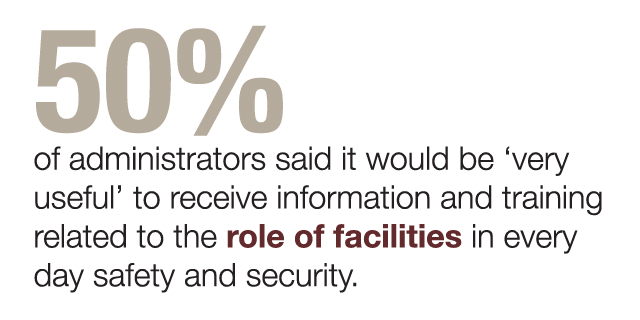
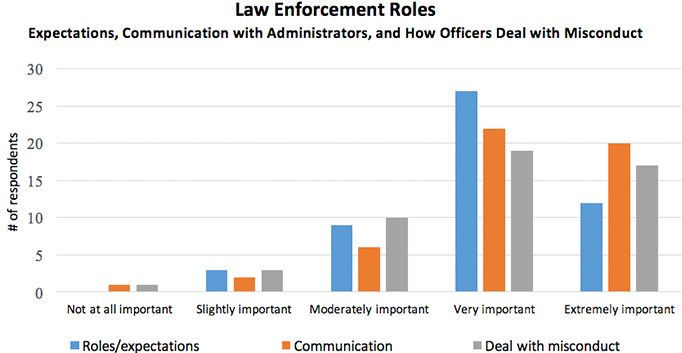
- Communication between school personnel and officers regarding expectations was also regarded as 'very important' by 43 percent of respondents, and 'extremely important' by 39 percent.
- Respondents overall indicated that it would be 'very useful' to receive more information, training, and/or assistance relating to the Texas Unified School Safety and Security Standards, particularly in the following areas: Mitigation/prevention (54 percent), Preparedness, (59 percent), Response, (62 percent), and Recovery (55 percent). Over a third reported that it would be 'very useful' to get more information, training, or assistance on conducting safety and security audits (37 percent).
- Forty-eight percent of administrators indicated it would be 'very useful' to receive information and training related to the role of school facilities in everyday safety and security.
- Among electronic mediums, videos and toolkits were rated as 'very useful' for disseminating information by 32 and 27 percent of administrators, respectively.
- Overall, respondents indicated that on-site trainings would be more useful than off-site trainings. Forty-one percent indicated on-site trainings would be 'moderately useful,' while 44 percent said that off-site trainings would only be 'somewhat useful.'
- The majority of administrators reported that half day trainings would be best both for on- and off-site trainings (84 percent and 58 percent, respectively).
- Most administrators suggested that the best time of the year to receive training at an off-site location would be between June and September, with 52 percent specifically identifying August as the best month.
